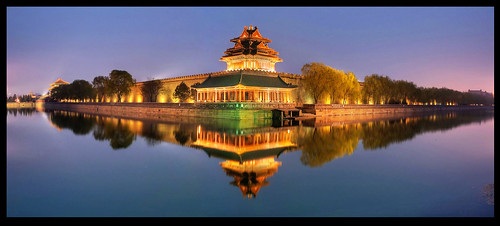Adolf Hitler
Early life of Adolf Hitler
 Adolf Hitler
Adolf Hitler was an Austrian-born German politician and the leader of the Nazi Party (German:
Nationalsozialistische Deutsche Arbeiterpartei (NSDAP); National Socialist German Workers Party). He was chancellor of Germany from 1933 to 1945 and dictator of Nazi Germany (as
Führer und Reichskanzler) from 1934 to 1945. Hitler was at the centre of Nazi Germany, World War II in Europe, andthe Holocaust.
Hitler was a decorated veteran of World War I. He joined the German Workers' Party (precursor of the NSDAP) in 1919, and became leader of the NSDAP in 1921. In 1923, he attempted a coup in Munich to seize power. The failed coup resulted in Hitler's imprisonment, during which time he wrote his memoir, Mein Kampf (My Struggle). After his release in 1924, Hitler gained popular support by attacking the Treaty of Versailles and promoting Pan-Germanism,antisemitism, and anti-communism with charismatic oratory and Nazi propaganda. Hitler frequently denounced international capitalism andcommunism as being part of a Jewish conspiracy.
History

Adolf Hitler was born on 20 April 1889 in the small Austrian town of Braunau to Alois Hitler who later became a senior customs official and his wife Klara, who was from a poor peasant family.
At primary school, Hitler showed great intellectual potential and was extremely popular with fellow pupils as well as being admired for his leadership qualities. However, competition at secondary school was tougher and Hitler stopped trying as a result.
At the age of 18, he moved to Vienna with money inherited after his father's death in 1903, in order to pursue a career in art, as this was his best subject at school. However his applications for both the Vienna Academy of Art and the School of Architecture were rejected.
Death
Adolf Hitler committed suicide by gunshot on 30 April 1945 in his Führerbunker in Berlin. His wife Eva (née Braun) committed suicide with him by ingesting cyanide.That afternoon, in accordance with Hitler's prior instructions, their remains were carried up the stairs through the bunker's emergency exit, doused in petrol, and set alight in the Reich Chancellery garden outside the bunker. Records in the Soviet archives show that their burnt remains were recovered and interred in successive locations until 1970, when they were again exhumed, cremated, and the ashes scattered.
Accounts differ as to the cause of death; one states that he died by poison only and another that he died by a self-inflicted gunshot while biting down on a cyanide capsule.
